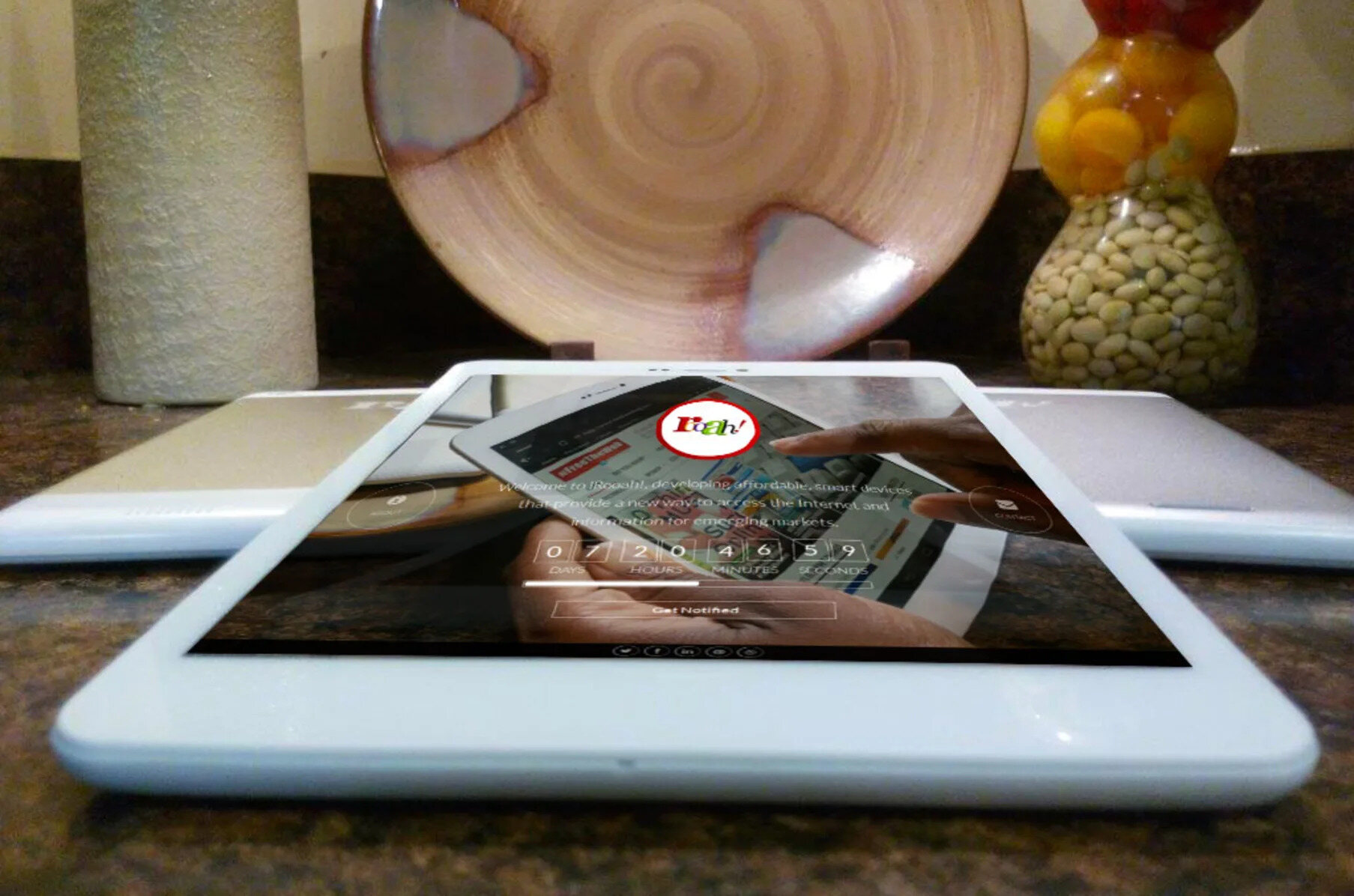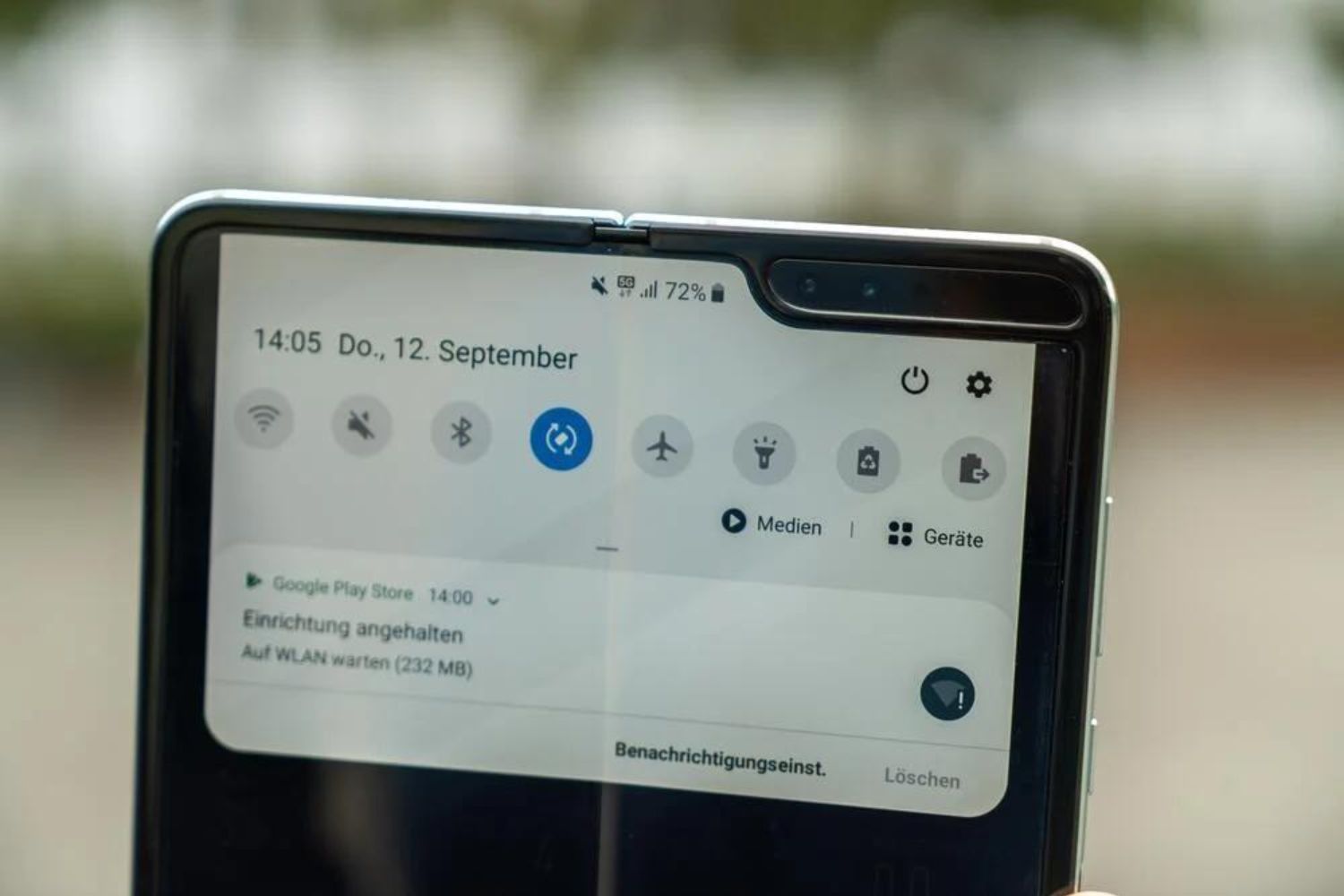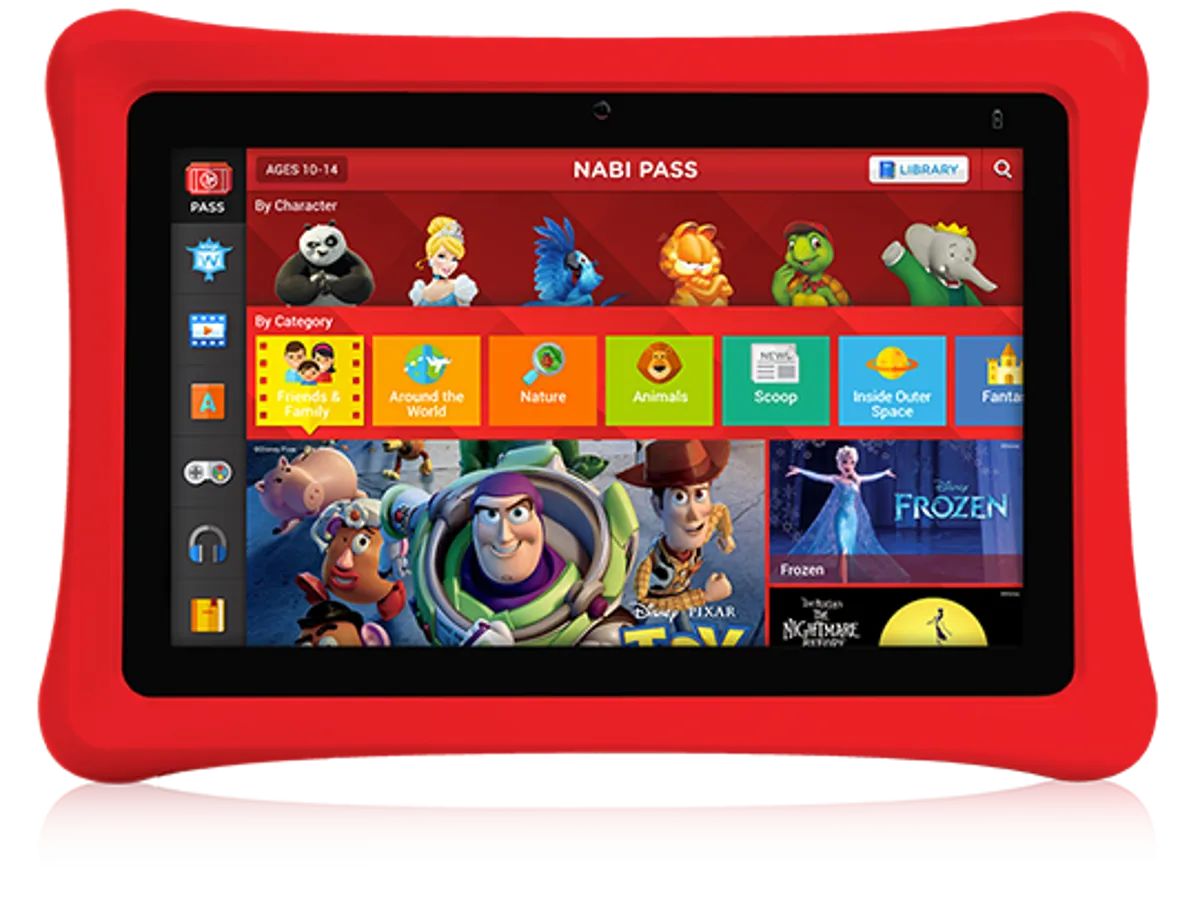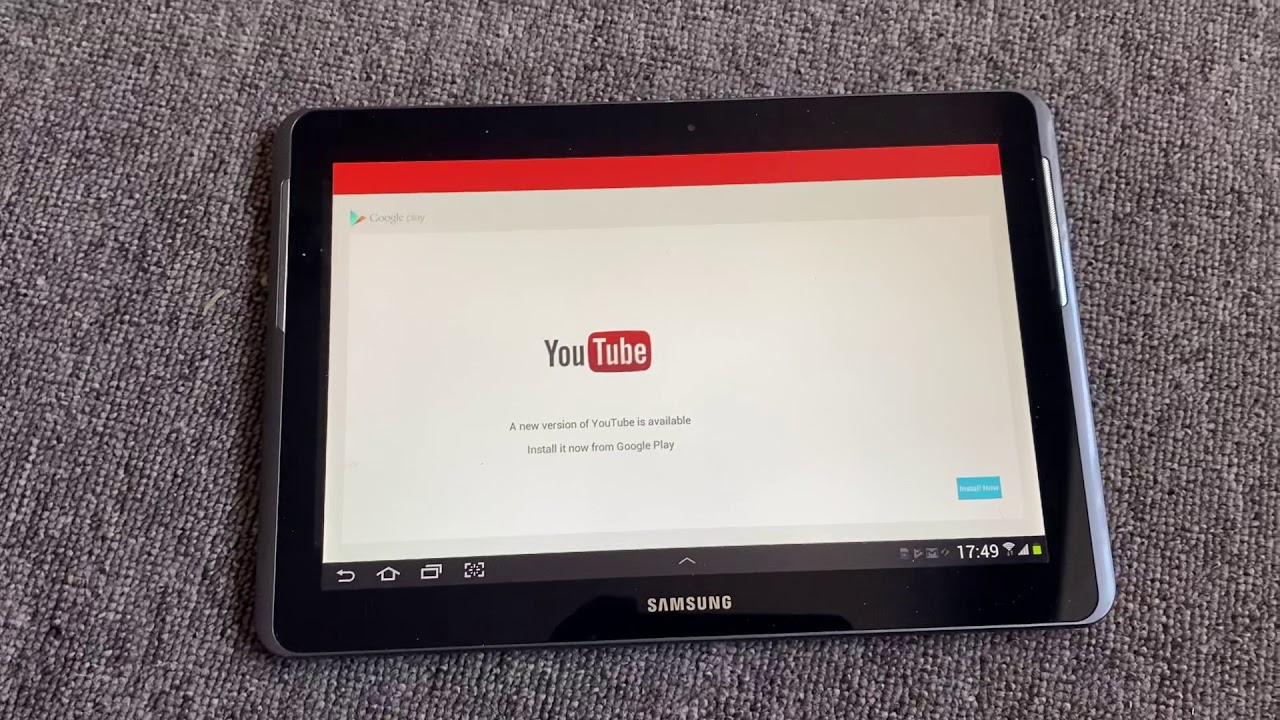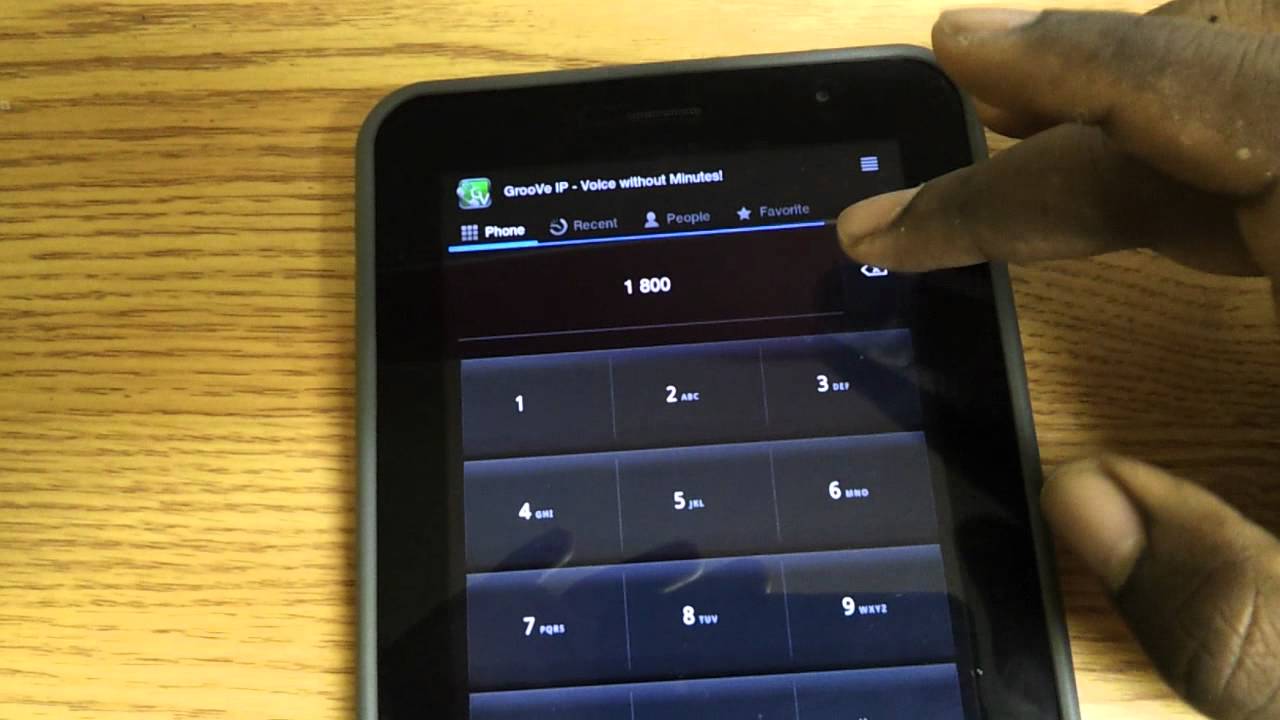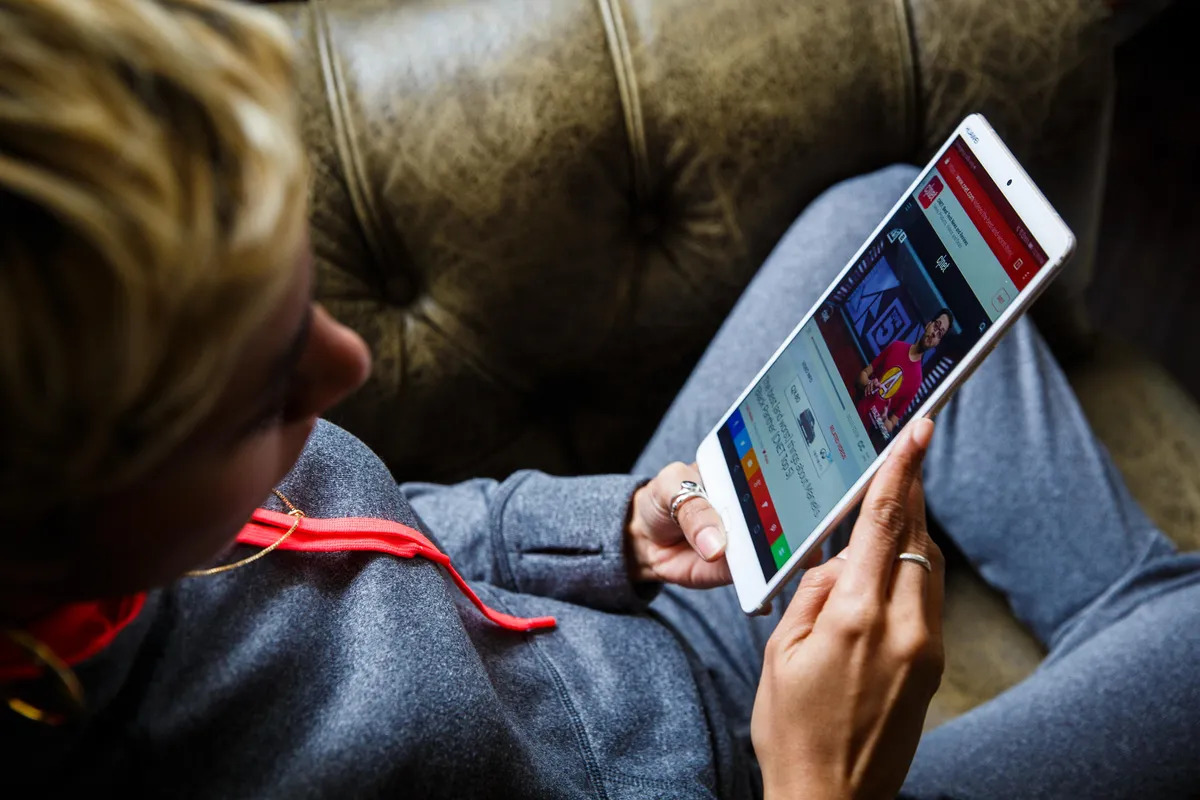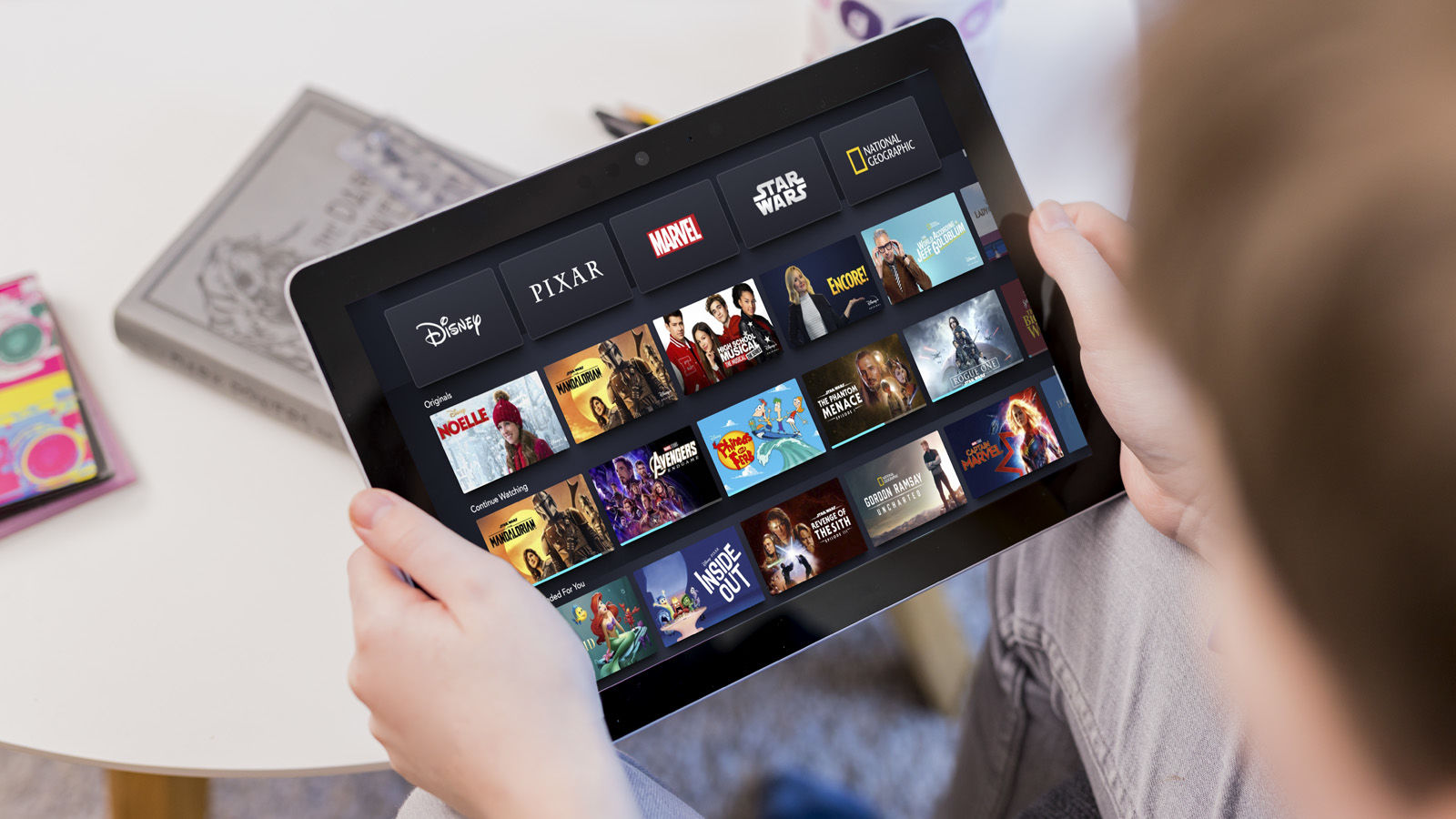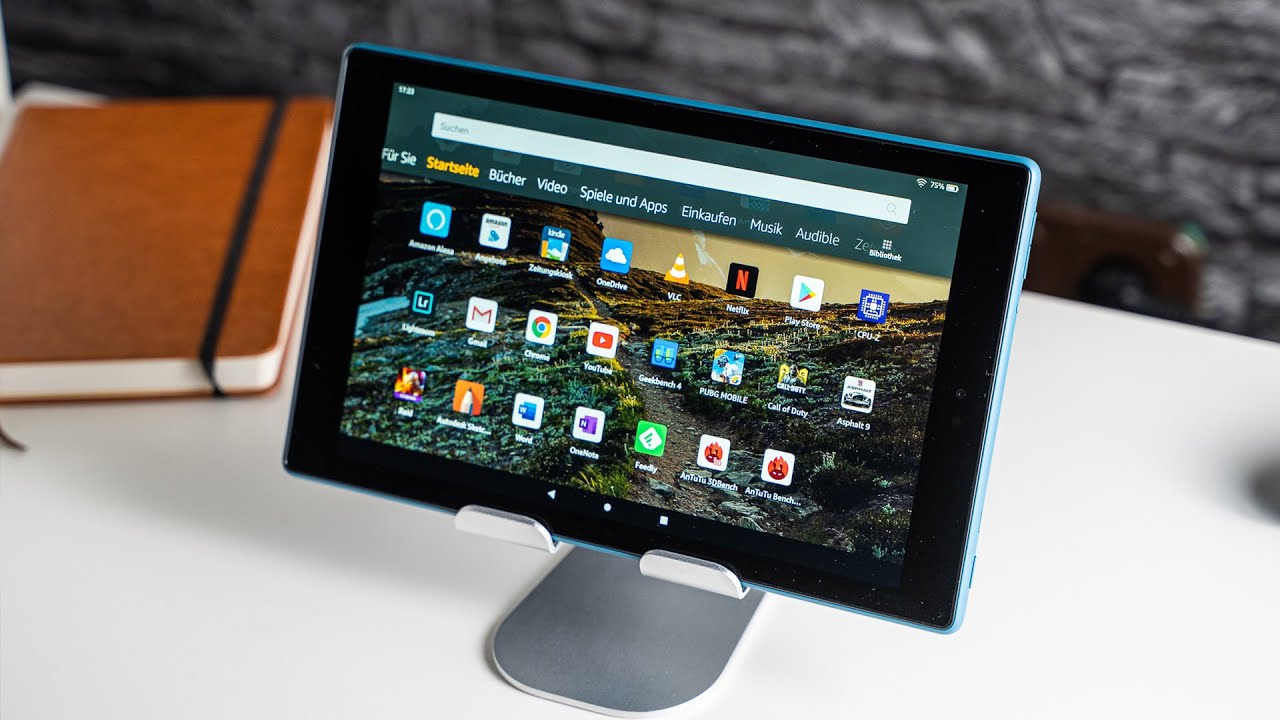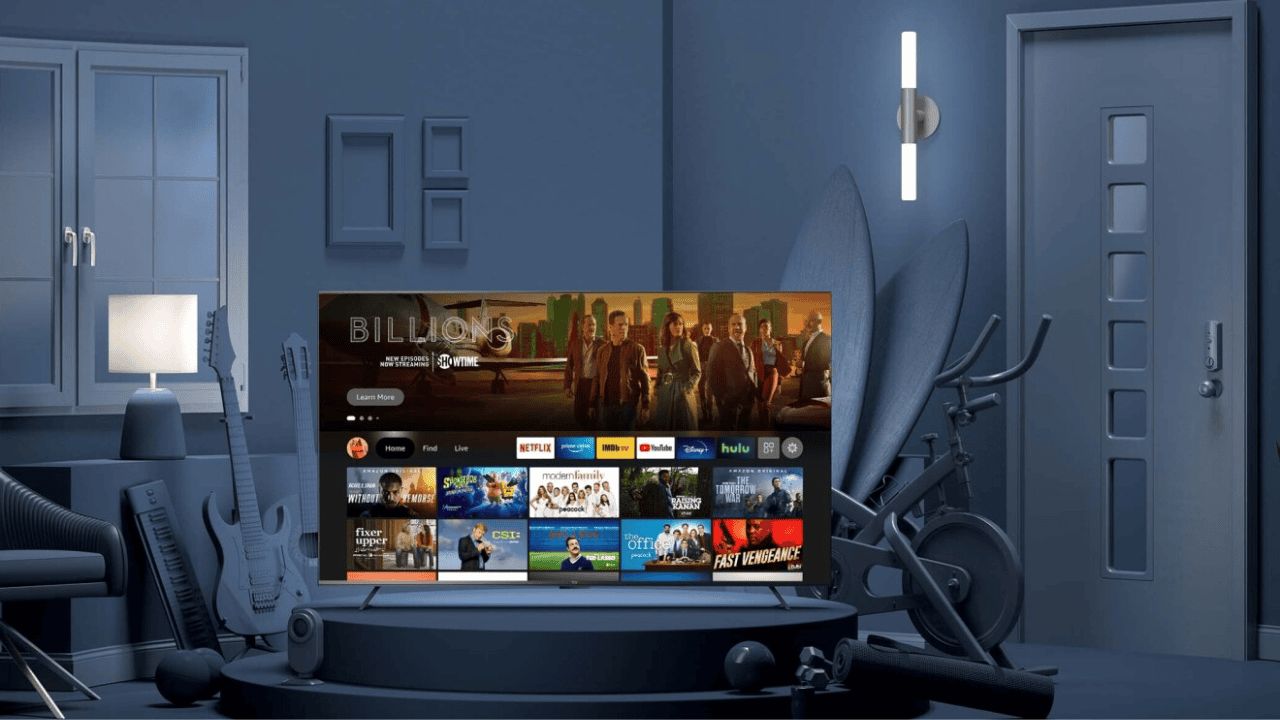Introduction
In today’s digital age, staying connected to the internet has become an essential part of our daily lives. Whether it’s for work, entertainment, or communication, having internet access is crucial. Tablets, with their portable and versatile nature, have become increasingly popular as a convenient device for browsing the web, streaming videos, and accessing various online services.
However, without a reliable internet connection, a tablet’s functionality may be severely limited. In this article, we will explore various options for getting internet on your tablet, allowing you to make the most out of your device’s capabilities.
Having internet access on your tablet opens up a world of possibilities. You can stay connected with friends and family through social media platforms, check your emails on the go, keep up with the latest news, watch movies and TV shows, and even engage in online gaming. Whether you are a student, a professional, or simply an avid internet user, having internet on your tablet is incredibly valuable.
In the following sections, we will discuss different methods for getting internet on your tablet. From Wi-Fi connections to mobile data plans, we will explore the pros and cons of each option, helping you choose the one that best suits your needs and budget.
Why Do You Need Internet on Your Tablet?
Having internet access on your tablet opens up a world of possibilities and enhances the overall functionality of the device. Here are some compelling reasons why you need internet on your tablet:
- Stay connected: With internet access on your tablet, you can easily stay connected with your friends, family, and colleagues. You can use social media apps to keep up with the latest updates, chat with loved ones, and share your experiences.
- Work and productivity: Many professionals use tablets for work, and having internet access allows them to stay productive on the go. You can access cloud-based productivity tools, work on documents, send emails, and attend virtual meetings from anywhere.
- Entertainment on the go: With internet access, your tablet becomes an entertainment hub. You can stream movies, TV shows, and music, and access platforms like YouTube, Spotify, Netflix, and Amazon Prime. It’s like carrying a portable multimedia center in your hands.
- Access to information: The internet is a vast repository of information, and having it on your tablet means you can access news, articles, blogs, and websites from around the world. Whether you need to research a topic, learn something new, or stay up-to-date with current events, having internet access is invaluable.
- Online shopping: Tablets are perfect for online shopping, and having internet access means you can browse various online stores, compare prices, read customer reviews, and make purchases with just a few taps. It offers convenience and flexibility, allowing you to shop anytime, anywhere.
- Travel assistance: If you are a frequent traveler, having internet access on your tablet becomes even more important. You can use navigation apps, find nearby attractions, book accommodations, check flight schedules, and explore foreign destinations without any hassles.
These are just a few reasons why having internet access on your tablet is essential. It not only enhances the device’s capabilities but also adds greater convenience and flexibility to your daily life.
Different Options for Getting Internet on Your Tablet
There are several options available for getting internet on your tablet, each with its own advantages and limitations. Here are the most common methods:
- Wi-Fi Connection: The easiest and most common way to connect your tablet to the internet is through a Wi-Fi connection. You can connect to an existing Wi-Fi network, such as your home or office network, or even public Wi-Fi networks available in cafes, libraries, and other public spaces. Wi-Fi connections are usually free and offer a fast and stable internet connection, making them a popular choice for tablet users.
- Mobile Hotspots: If you need internet access on your tablet while on the move, you can consider using a mobile hotspot. A mobile hotspot is a portable device that connects to cellular networks and broadcasts a Wi-Fi signal, allowing you to connect your tablet to the internet. You can either purchase a dedicated mobile hotspot device or use your smartphone as a hotspot. This option provides internet access wherever there is a cellular network signal, making it ideal for frequent travelers or individuals who need reliable internet access on the go.
- Tethering Your Tablet: Tethering is another option that allows you to share your smartphone’s internet connection with your tablet. By enabling tethering on your smartphone, you can create a Wi-Fi hotspot or connect your tablet via USB or Bluetooth. This method allows you to utilize your existing mobile data plan to get internet access on your tablet. However, it’s important to check with your mobile carrier regarding any additional charges or data limitations associated with tethering.
- Mobile Data Plans: Many cellular carriers offer mobile data plans specifically tailored for tablets. These plans provide you with a dedicated data allowance that can be used solely for internet access on your tablet. With a mobile data plan, you can skip the need for Wi-Fi connections or mobile hotspots and enjoy internet access wherever your cellular network coverage is available. This option is convenient, but it may involve additional monthly costs depending on the data plan you choose.
- Public Wi-Fi Networks: In addition to Wi-Fi networks available at home, work, or through mobile hotspots, you can also take advantage of public Wi-Fi networks. Many public places like coffee shops, restaurants, airports, and shopping malls provide free Wi-Fi access for their customers. However, it’s worth noting that public Wi-Fi networks can be less secure than private ones, so it’s advisable to exercise caution when accessing sensitive information over public networks.
These different options for getting internet on your tablet offer flexibility and convenience depending on your specific requirements. Assess your needs and consider factors like cost, mobility, and coverage before choosing the most suitable method for getting internet on your tablet.
Wi-Fi Connection
One of the most common and convenient ways to get internet on your tablet is through a Wi-Fi connection. Wi-Fi connections are widely available in homes, offices, cafes, hotels, and other public places. Here are the key features and benefits of using a Wi-Fi connection:
- Easy accessibility: Wi-Fi connections are easy to access and configure on your tablet. Simply go to the Wi-Fi settings, scan for available networks, and select the one you want to connect to. Most networks require a password for security purposes, so make sure you have the correct password if it is a secure network.
- Fast and stable connection: Wi-Fi connections generally offer faster and more reliable internet speeds compared to cellular data networks. This means you can enjoy smooth browsing, streaming, and downloading experiences on your tablet without interruptions.
- Cost-effective: Wi-Fi connections are often free or included as part of your existing internet service at home or work. By connecting your tablet to a Wi-Fi network, you can save on mobile data costs and avoid exceeding your monthly data allowance.
- Multiple device connectivity: Wi-Fi networks allow you to connect multiple devices simultaneously, which means you can use your tablet, smartphone, laptop, and other devices without the need for separate internet connections.
- Secure connections: Many Wi-Fi networks offer encryption and password protection, ensuring your data is transmitted securely over the network. However, it’s important to be cautious when connecting to public Wi-Fi networks, as they can be less secure. Avoid entering sensitive information or accessing confidential accounts when connected to public Wi-Fi.
While Wi-Fi connections provide numerous benefits, it’s important to note that they have limitations. The range of Wi-Fi networks can be limited, especially in public spaces, and you may experience connectivity issues if you are far away from the router or in areas with weak signals. Additionally, you are dependent on the availability of Wi-Fi networks, which may not always be accessible in remote locations or during travel.
Overall, Wi-Fi connections are a popular and cost-effective option for getting internet on your tablet. They offer fast and stable internet access, provided you are within range of a reliable Wi-Fi network. Whether at home, work, or in public places, connecting your tablet to a Wi-Fi network is a convenient way to enjoy all the online features and services that your tablet has to offer.
Mobile Hotspots
If you need internet access on your tablet while on the go, using a mobile hotspot is an excellent option. A mobile hotspot is a portable device that connects to cellular networks and broadcasts a Wi-Fi signal, allowing you to connect your tablet to the internet. Here are the key advantages and considerations of using mobile hotspots:
- Portability and flexibility: Mobile hotspots are compact and lightweight, making them highly portable. You can easily carry them in your pocket, bag, or purse, allowing you to have internet access wherever you go. This is particularly useful for travelers or individuals who need reliable internet connectivity outside of Wi-Fi networks.
- Connect multiple devices: Mobile hotspots typically allow you to connect multiple devices simultaneously, including your tablet, smartphone, laptop, and more. This means you can share your internet connection with family or colleagues when needed.
- Wide network coverage: Mobile hotspots connect to cellular networks, offering wider coverage compared to Wi-Fi networks. As long as you have cellular signal reception, you can enjoy internet access on your tablet, even in remote or rural areas where Wi-Fi may be unavailable.
- Secure connections: Most mobile hotspots provide password protection and encryption, ensuring the security of your internet connection. This is especially important when accessing sensitive information or performing online transactions on your tablet.
- Data limitations and costs: It’s important to consider your mobile data plan when using a mobile hotspot. The amount of data you can use may be subject to limitations and may incur additional charges if you exceed your monthly data allowance. Be mindful of your data usage to avoid unexpected fees.
Mobile hotspots can be obtained by purchasing a dedicated hotspot device, which operates similarly to a mobile phone but without the calling features. Many cellular providers also offer hotspot plans that allow you to add a hotspot feature to your existing mobile phone plan. Additionally, some smartphones have a built-in hotspot feature that can be activated to share your mobile data with your tablet.
Before using a mobile hotspot, ensure that you have a strong cellular signal in the area where you plan to use it. The speed and reliability of your internet connection will depend on the quality of the cellular network coverage.
Mobile hotspots are an excellent option for individuals who require internet access on their tablet while on the move. Their portability, wide network coverage, and the ability to connect multiple devices make them a convenient choice, especially for travelers or those in areas where Wi-Fi networks are limited or unavailable.
Tethering Your Tablet
If you want to use your tablet’s internet connectivity on the go, tethering is an option to consider. Tethering allows you to use your smartphone’s internet connection and share it with your tablet, effectively giving your tablet access to the internet through your phone’s cellular data. Here are the key benefits and considerations of tethering your tablet:
- Utilize existing mobile data: Tethering allows you to take advantage of your smartphone’s mobile data plan and use it on your tablet. This means you don’t need to get a separate data plan or pay additional costs for internet access on your tablet.
- Multiple connectivity options: Tethering can be done in various ways, such as using a Wi-Fi hotspot, USB cable, or Bluetooth. Wi-Fi tethering allows you to connect your tablet to your phone’s Wi-Fi hotspot, while USB and Bluetooth tethering use a physical connection between the devices.
- Flexibility and convenience: Tethering your tablet allows you to get online wherever you have cellular reception on your smartphone. It’s a convenient solution for those who don’t have access to Wi-Fi networks or when you’re traveling in areas with limited or no Wi-Fi coverage.
- Data usage and limitations: It’s important to be aware of your mobile data plan and any limitations, as tethering uses your phone’s data. Be mindful of your data usage to avoid exceeding your allowance and incurring additional charges. Some carriers may have specific restrictions or charges for tethering, so make sure to check your plan details.
- Battery drain: Tethering your tablet to your smartphone can consume more battery power on both devices. It’s recommended to have your smartphone plugged in or fully charged when using it as a hotspot or for tethering to ensure uninterrupted internet access.
To tether your tablet to your smartphone, you’ll need to enable tethering on your phone and connect your tablet to your phone’s network. The specific steps may vary depending on your phone’s operating system and the tethering method you choose. Consult your phone’s user manual or search online for detailed instructions based on your device and operating system.
Tethering your tablet can be a convenient solution to access the internet on the go, especially when Wi-Fi networks are not readily available. By harnessing your smartphone’s cellular data, you can make the most of your existing mobile plan and enjoy internet connectivity on your tablet wherever you are.
Mobile Data Plans
Another option for getting internet on your tablet is to subscribe to a dedicated mobile data plan. Many cellular providers offer data plans specifically designed for tablets, allowing you to have internet access without depending on Wi-Fi networks or tethering. Here are the key features and considerations of using mobile data plans for your tablet:
- Dedicated data allowance: Mobile data plans for tablets provide you with a specific amount of data that you can use for internet access on your tablet. Depending on your plan, you may have a monthly data allowance that suits your usage needs.
- Flexibility and mobility: With a mobile data plan, you can access the internet on your tablet wherever your cellular network has coverage. This makes it a great option for those who are frequently on the move or need internet connectivity in areas where Wi-Fi is unavailable.
- Fast and reliable connection: Mobile data networks are designed to provide fast and reliable internet connections. Depending on the network coverage and signal strength, you can enjoy seamless browsing, video streaming, and online activities on your tablet.
- No need for Wi-Fi or tethering: By subscribing to a mobile data plan, you don’t need to rely on Wi-Fi networks or tethering to get internet access on your tablet. This offers greater convenience and independence, especially for individuals who don’t have access to reliable Wi-Fi or prefer not to rely on other devices for internet connectivity.
- Data limitations and cost: It’s important to consider the data limitations and costs associated with mobile data plans. Different plans offer varying levels of data allowances, and exceeding your monthly limit may result in additional charges or reduced internet speeds. Be mindful of your data usage and select a plan that suits your needs and budget.
To subscribe to a mobile data plan for your tablet, you’ll need to contact your preferred cellular provider and inquire about their tablet-specific plans. They will guide you through the process of selecting a plan, activating the SIM card for your tablet, and configuring the necessary settings to get internet access.
Mobile data plans provide a convenient and independent way to access the internet on your tablet. They offer flexibility, mobility, and reliable connectivity, allowing you to stay connected wherever you go. Consider your data usage habits and requirements to choose a plan that aligns with your needs and provides a seamless internet experience on your tablet.
Public Wi-Fi Networks
In addition to Wi-Fi connections at home or work, public Wi-Fi networks are another option for getting internet on your tablet. Many public places, such as coffee shops, restaurants, airports, and libraries, offer free Wi-Fi access to their customers. Here are the key features and considerations of using public Wi-Fi networks:
- Availability in public spaces: Public Wi-Fi networks are widespread in many public areas, making them easily accessible for tablet users. You can connect to these networks by searching for available Wi-Fi connections in the area and selecting the appropriate network.
- No additional cost: Public Wi-Fi networks are often free to use, making them a cost-effective option for getting internet access on your tablet. This can be especially beneficial if you are a frequent visitor to places that offer free Wi-Fi, as you can save on mobile data costs.
- High-speed connections: Many public Wi-Fi networks offer high-speed internet connections, allowing you to browse the web, stream content, and download files quickly and efficiently on your tablet.
- Convenience for short-term use: Public Wi-Fi networks are convenient for short-term use, such as when you’re grabbing a quick coffee or waiting at an airport. They provide a way to get online without the need for a long-term commitment or additional setup.
- Security considerations: It’s important to exercise caution when using public Wi-Fi networks, as they may not always be secure. Public networks are more vulnerable to security risks, such as data theft or hacking. It’s advisable to avoid accessing sensitive information or performing online transactions when connected to a public Wi-Fi network.
When connecting to a public Wi-Fi network, ensure you are connecting to the legitimate network provided by the establishment. Be cautious of networks with similar names or unsecured network connections. Additionally, consider using a virtual private network (VPN) when accessing public Wi-Fi networks to add an extra layer of security to your internet connection.
Public Wi-Fi networks offer a convenient and cost-effective solution for getting internet access on your tablet. They are widely available and provide high-speed connections, making them suitable for short-term use or when you’re out and about. However, it’s important to prioritize security and take necessary precautions when using public Wi-Fi networks to protect your personal information and online activities.
Conclusion
Having internet access on your tablet is essential in today’s digital age. It opens up a world of possibilities, allowing you to stay connected, be productive, and enjoy a wide range of online services and entertainment. By exploring the different options for getting internet on your tablet, you can choose the method that best suits your needs and preferences.
Wi-Fi connections provide convenience, fast speeds, and cost savings, especially when connected to existing networks at home, work, or public places. Mobile hotspots offer portability, wide network coverage, and the ability to connect multiple devices when you’re on the move. Tethering your tablet to your smartphone allows you to utilize your existing mobile data plan, offering flexibility and convenience. Dedicated mobile data plans provide an independent and reliable way to access the internet on your tablet, tailored specifically for tablet usage. Public Wi-Fi networks offer a cost-effective solution for short-term use in public places, but caution must be taken in terms of security.
Consider your specific needs, such as mobility, data usage, coverage requirements, and budget, when choosing the best option for getting internet on your tablet. You may even find that a combination of different methods works well for different situations. Prioritize security by using secure networks, enabling encryption, and considering the use of VPNs when connecting to public Wi-Fi networks.
Ultimately, with internet access on your tablet, you can unlock the full potential of your device and enjoy seamless connectivity wherever you go. Stay connected, stay productive, and explore the endless possibilities that the internet brings with it.







